Musée de l’Orangerie always shows original painters. After Paula Rego this winter, Cécile Debray, director of the museum, has curated a beautiful and tragic show, “The adventure of the Blue Rider” about two German painters, Franz Marc and August Macke, who were both killed in the first years of World War I. At 36 and 27, they hardly had time to prove their genius. But their friendship and the very strong relationships they entertained with Kandinsky, Delaunay, Apollinaire and Klee are riveting and the exhibition makes us discover the German followers of Gauguin and Van Gogh.
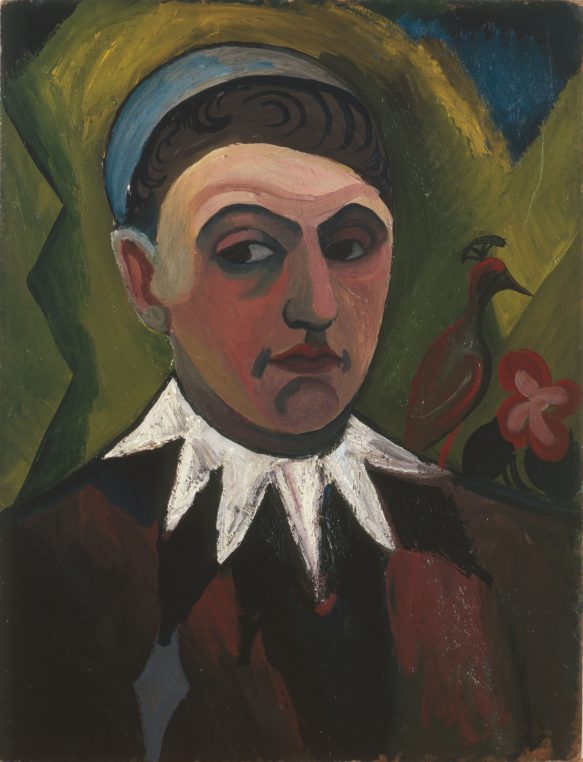
August Macke, “Clown”, self portrait caricature, 1913, Chemnitz, Städtische Kunstsammlungen, © Sammlung Claus Hüppe
Best friends and key artists of the German expressionist movement “Der Blaue Reiter“, Macke and Marc started painting as post impressionists and were fascinated by nature, landscapes and animals. They went on to discover cubism and fauvism. In 1912, the first two exhibitions of “The Blue Rider” took place in Munich including Picasso, Derain, Klee and Rousseau. They were keen to include the International scene and knew about Italian futurism. In the spring of 1914, Macke travelled to Tunisia with Klee, painting in Kairouan. (Klee’s painting of Kairouan features in the Orientalist exhibition at Marmottan) and this trip marks the beginning of his abstract paintings which will be interrupted by the war.
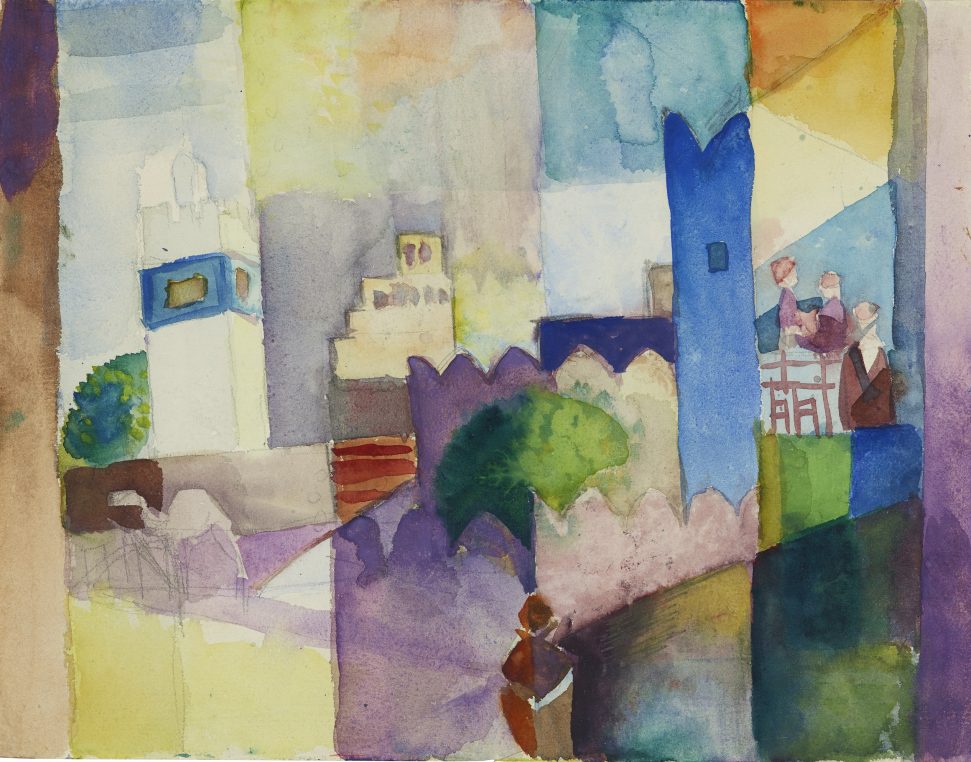
August Macke, “Kairouan III”, 1914, © LWL-Museum für Kunst und Kultur (Westfälisches Landesmuseum), Münster / Sabine Ahlbrand-Dornseif
August Macke and Franz Marc met in 1910. The first one was trained in Düsseldorf and was very impressed by Japonism and Art nouveau. Marc, studied in Munich and had a training in religion and philosophy. When he publishes the Almanach der Blaue Reiter with Kandisnky, he gives a large space to Douanier Rousseau whose simplicity he admires. And one of Macke’s paintings in the show, “Church St Mary of Bonn with houses and a chimney” is reminiscent of “Promeneurs dans un parc” by Henri Rousseau.
“The name of Blaue Reiter was found while drinking coffee. We both liked blue, Marc liked horses and I like riders” says Kandinsky. The project aimed at fighting old fashion art. The Almanach, of which there is an example in the show, is entirely written and illustrated by artists. It includes all arts from Easter Island statues to children’s drawings. It promotes the European avant garde.
In 1913, Franz Marc paints a terrifying and prescient, almost abstract work, “the Wolves (Balkan war)”, where charming animals become agressive. Macke will die in September 1914, a month after joining the front, Marc dies near Verdun in 1916. The terrible irony is that they were both francophiles.
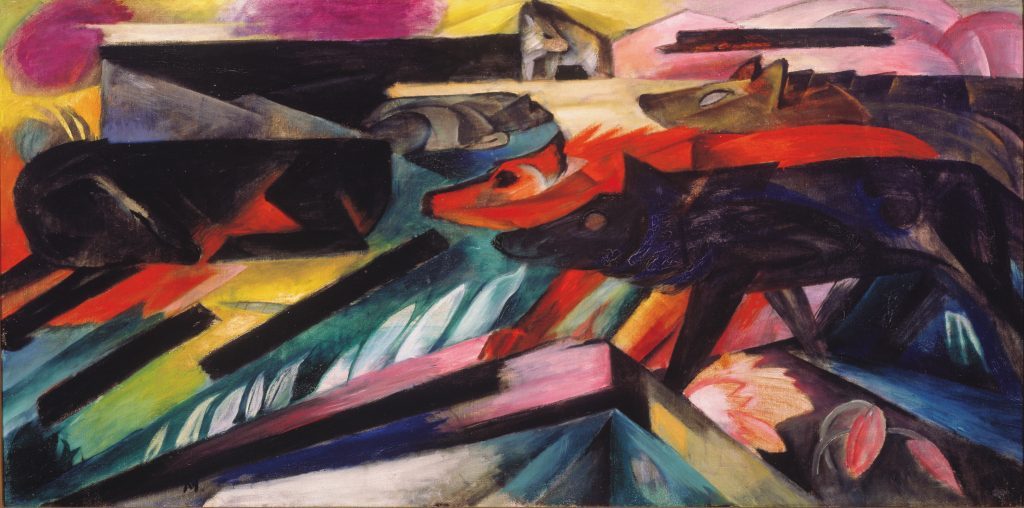
Franz Marc, The Wolves (Balkan war) 1913, Buffalo (NY), © Albright-Knox Art Gallery, Dist. RMN-Grand Palais / image AKAG
From Cézanne’s still lives in 1890 to Kandinsky, Macke and Marc evolved in a fascinating way and this show is a lesson in art history as well as a true pleasure to the eye. It is their first monographic show in France. Musée de l’Orangerie until June 17.
Share this Post
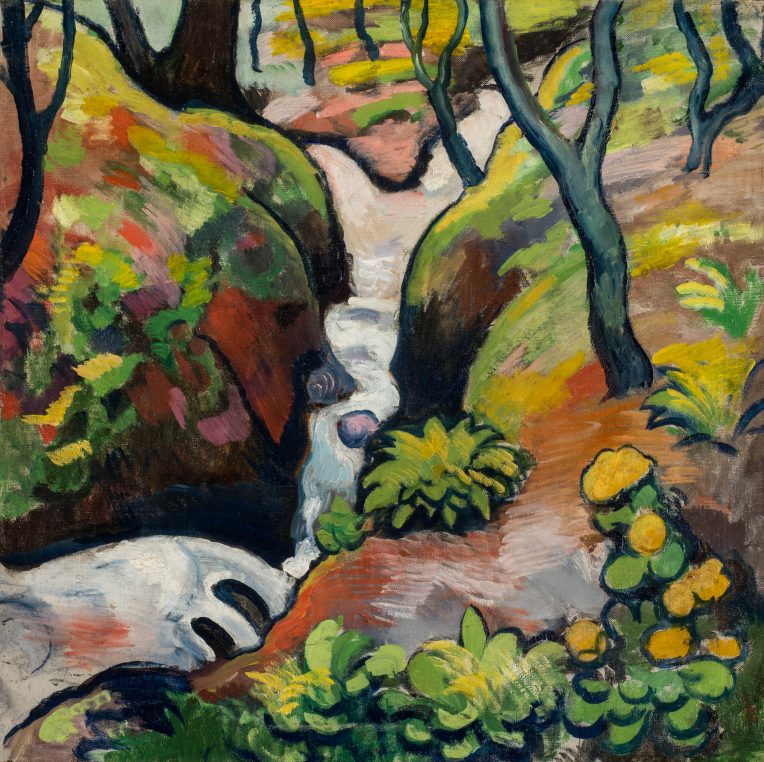
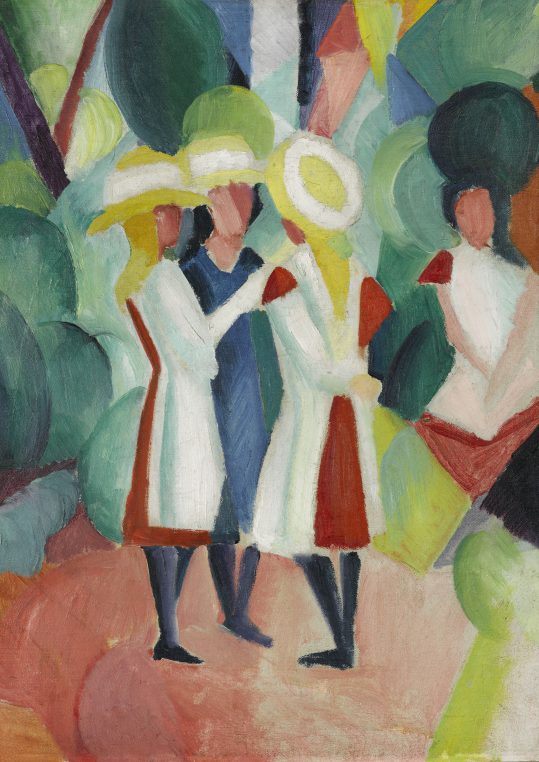
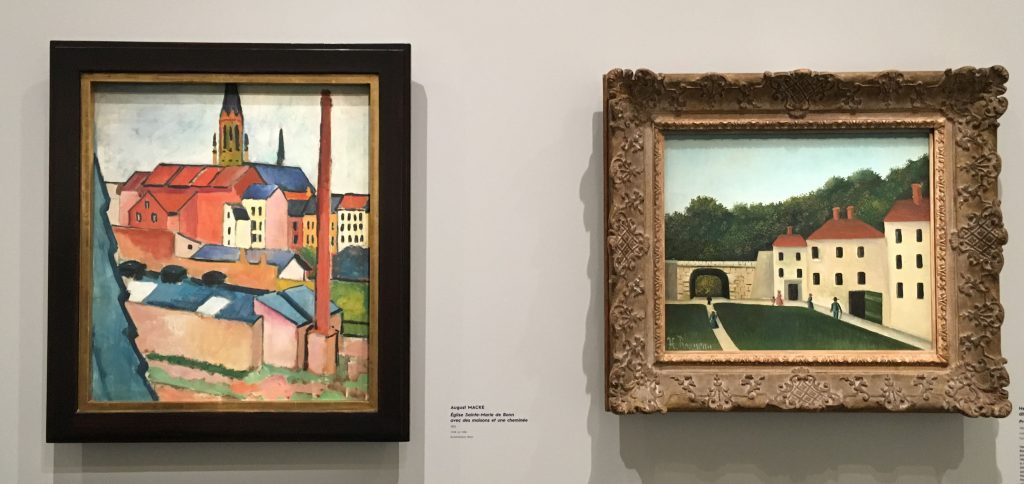
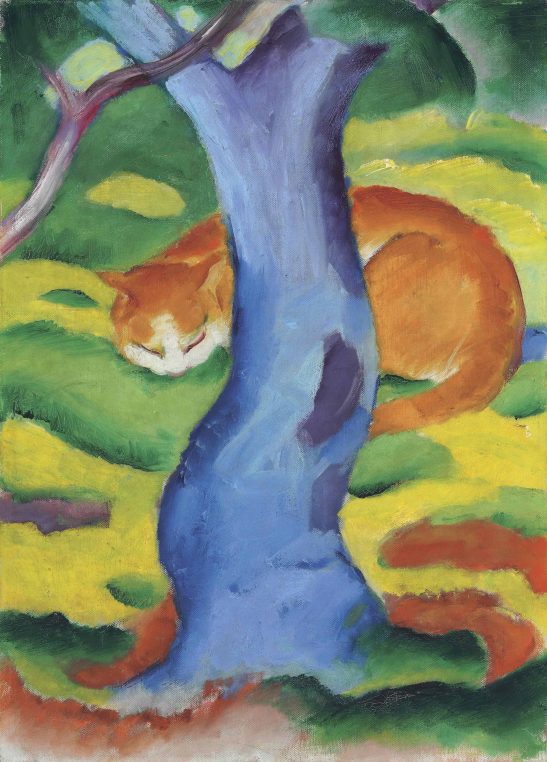
2 Comments on “The tragic destinies of Franz Marc and August Macke”
That sounds like an excellent show. Thanks Laure for your account of it.
J’adore ces peintures !